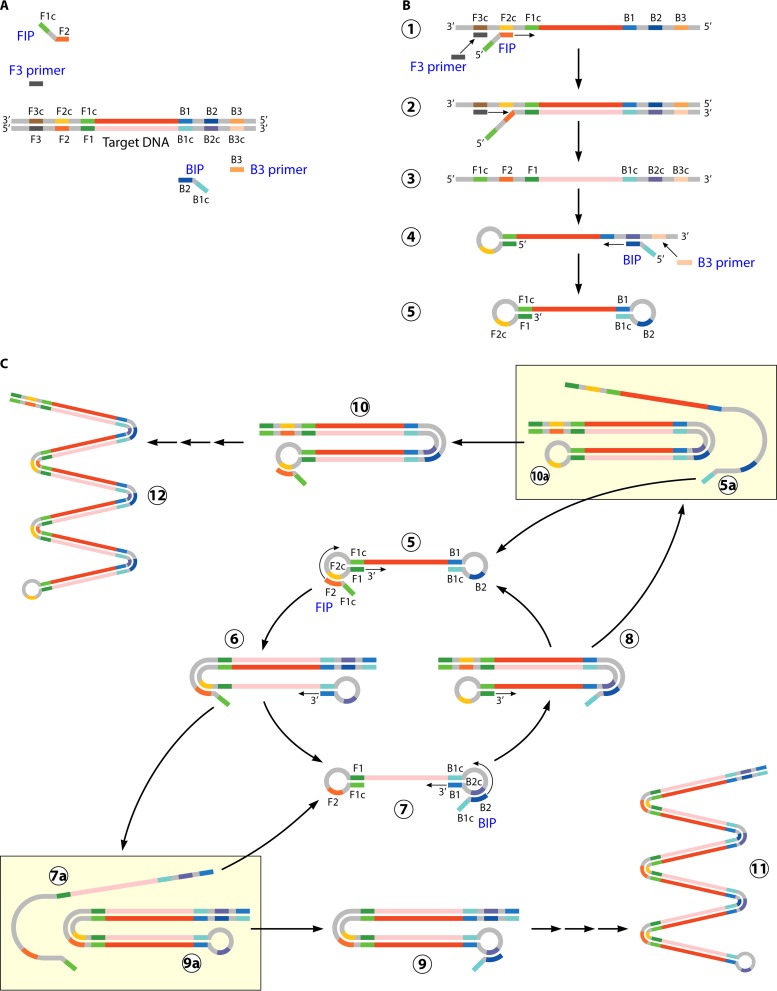FIG 2.
Loop-mediated isothermal amplification (LAMP). (A) LAMP-based amplification requires 4 primers complementary to 6 different regions of the nucleic acid target (F1, F2, F3, B1, B2, and B3). The “inner primers” FIP and BIP each contain two regions complementary to the target sequence; one anneals to the template strand (F2 and B2), and one anneals to the complementary strand (F1c and B1c). The “outer primers” (F3 and B3) are complementary to a single sequence upstream of FIP and BIP, respectively. (B) Replication initiates with annealing and extension of the FIP and BIP “inner primers.” The “outer primers” F3 and B3 anneal upstream of FIP and BIP and are extended, which displaces the strands initiated by the FIP and BIP inner primers. The displaced strands form 5′ loop structures through complementary binding, resulting in a single-strand “dumbbell” structure. (C) The single-strand “dumbbell” serves as the template for subsequent rounds of amplification using the FIP and BIP primers to initiate elongation. Single-stranded template is maintained through formation of loop structures which can be extended to displace newly synthesized double-strand product (C5 through C8). (Adapted from reference 36 with permission from Macmillan Publishers Ltd.)

